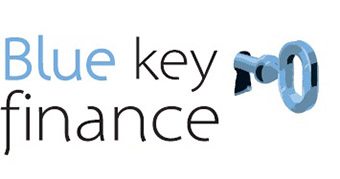How are break costs calculated?
Break costs may be high. We’ll now explain the process of fixing interest rates, what break costs are and when they are payable.
The process of fixing interest rates
When a Bank lends you money at a fixed rate for a set term, the risk associated with movements in interest rates is accepted by the Bank. The Bank then manages the risk based on the understanding that all the required repayments due over the whole of the fixed rate period will be made in full and on time. The Bank obtains funding on this basis through transactions as wholesale interest rates. If you make prepayment (i.e., you repay ahead of the due date or you pay an extra or higher amount) or change to another interest rate pr product or another repayment type, that will change the Bank’s funding position. If wholesale market interest rates have dropped, this causes a loss to the Bank. The estimated amount of this loss is passed on to you as a break cost (subject to the prepayment threshold described below).
When are break costs payable?
Break costs ARE payable on your fixed interest rate loan when wholesale interest rates have fallen during the fixed rate period on your loan AND:
- You prepay all of the total amount owing on your loan before the end of the fixed rate period; or
- You make prepayments in excess of the prepayment threshold (most banks allow you to prepay an extra $10,000 in each 12 month period without incurring any break costs); or
- If the total amount owing on your loan becomes repayable immediately during a fixed rate period because you are in default; or
- You change to another interest rate option (fixed or variable); or
- You change the repayment type (principle and interest, interest only, interest in advance)
Why are break costs necessary?
When you break your fixed rate period, the Bank has to break its wholesale interest rate arrangements and, if wholesale market interest rates have dropped, this causes a loss to the Bank.
How are break costs calculated?
The Bank calculates break costs using the break costs method which will be set out in your “General Terms and Conditions” of your loan agreement.
The break costs method estimates the Bank’s loss but does not necessarily reflect any actual transaction that the Bank may enter into (either before or at the time of the break).
Break costs are calculated on wholesale market interest rates. Those rates may not be the same as the fixed interest rate for your loan or other fixed interest rates that apply to the Bank’s other products. They may be lower or higher.
Warning:
Break costs can be high and the formula is complex. We suggest you ask your Bank for an estimate of the break costs and seek independent financial advice before you prepay any amount above your prepayment threshold on your loan during a fixed rate period.
Examples
The following two examples are a guide to the impact of break costs on a home loan:
EXAMPLE 1
| Original loan amount | $250,000 |
| Original loan term | 25 years |
| Initial fixed interest rate period | 3 years |
| Fixed interest rate in your contract | 8% p.a. |
| Repayment method | Interest only |
Wholesale market interest rates fell by 5%
BREAK COSTS
| Month Broken | Break Cost | Amount Prepaid |
| 12 | $23,528 | $250,000 |
| 18 | $17,837 | $250,000 |
| 24 | $11,962 | $250,000 |
EXAMPLE 2
| Original loan amount | $400,000 |
| Original loan term | 25 years |
| Initial fixed interest rate period | 3 years |
| Fixed interest rate in your contract | 7% p.a. |
| Repayment method | Principle and interest |
Monthly repayments of $2,500 & wholesale market interest rates fell by 2%.
BREAK COSTS
| Month broken | Break Cost | Amount Prepaid |
| 12 | $14,653 | $400,000 |
| 18 | $11,175 | $400,000 |
| 24 | $7,540 | $400,000 |
We make the following assumptions in the break cost calculation examples:
- The loan is repaid in full at 12, 18 and 24 months;
- Wholesale market interest rates fell for home loans by 5% p.a. (Example 1) and 2% p.a. (Example 2) between the date the fixed rate period started and the date of the break;
- There were no previous partial prepayments on the loan;
- Only the required monthly repayments were made – there were no arrears or additional repayments on the loan;
- The loan is repaid immediately after the repayment due on the date of full prepayment (that is, after the 12th, 18th or 24th repayment is made);
- Fees and charges that may be added to the loan balance are not taken into account;
- There is an equal number of days in each month (that is 365/12 days in each month)
